
views
X
Research source
While there have not been many controlled clinical trials to determine the effectiveness of lactobacilli, increasing it in your body could possibly improve your bowel health and treat diarrhea[2]
X
Research source
or vaginal infection.[3]
X
Trustworthy Source
PubMed Central
Journal archive from the U.S. National Institutes of Health
Go to source
Fortunately, you can add lactobacilli to your diet by eating fermented foods or taking a daily lactobacillus supplement.[4]
X
Trustworthy Source
Food and Agricultural Organization of the United Nations
Specialized agency of the United Nations responsible for leading international efforts to end world hunger and improve nutrition
Go to source
Eating Lactobacilli-Rich Foods
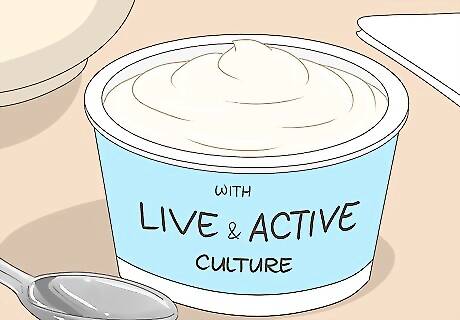
Look for yogurt that has live and active cultures. All Yogurt has a variety of lactobacilli strains in it. If you're looking for a specific strain, purchase yogurt that lists that strain in the ingredients. To add more yogurt to your diet, try swapping yogurt for sour cream or cottage cheese. For example, you might see that the manufacturer has added lactobacillus acidophilus and the yogurt also contains lactobacillus bulgaricus. Some yogurt lists "live and active cultures" on the ingredient label. This yogurt has additional lactobacilli added to the yogurt after it's fermented.

Drink kefir to include more lactobacillus in your diet. Kefir is similar to yogurt, but it has a looser, tangier flavor since it also includes yeast. It also has a wider variety of lactobacilli strains than yogurt. Look for plain or flavored kefir and use it in smoothies, dressings, or ice cream. You can buy kefir made from goat, sheep, or cow milk.

Eat fermented vegetables. Pound and salt cabbage, carrots, and radishes before leaving them to ferment and develop lactobacillus. If you don't want to make your own sauerkraut or kimchi, purchase them. You can find them in the canned aisle or produce department. If you're buying sauerkraut or kimchi, buy ones that don't have vinegar, which prevents the vegetables from fermenting.

Add fermented soybean products to your diet. Fermenting soybeans creates lactobacillus acidophilus and you can get this from eating miso and tempeh. Stir miso into soup or dressings and replace meat with slices of tempeh.Tip: Heating the tempeh or miso beyond 115 °F (46 °C) will destroy some of the lactobacilli, so eat them cold or room temperature to get the most lactobacilli. Try crumbling tempeh and adding it to recipes that call for ground meat. You can also slice it thinly and toss it on the grill. You can drink fermented soymilk which also contains lactobacillus. Purchase soymilk that's labeled "probiotic."
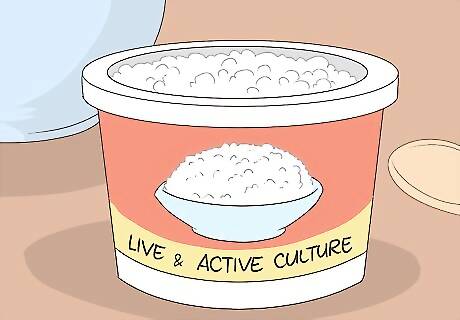
Include cheese that has live and active cultures added. Read the label to ensure these probiotics have been added to the cheese. These cheeses have lactobacilli that survive the aging process that cheese goes through before it's sold. Although some hard cheeses, such as gouda or cheddar, might contain lactobacilli, you'll probably get more lactobacilli from eating fresh cheese made from raw milk, such as Roquefort cheese, goat cheese, or cottage cheese. Remember that as the cheese ages, the lactobacillus level drops. For more lactobacillus-rich food, eat yogurt or fermented soybean products.
Taking Lactobacilli Supplements

Speak with your doctor before adding a lactobacillus supplement. Although lactobacillus supplements are generally considered to be safe, talk with your doctor if you have short bowel syndrome, a weakened immune system, ulcerative colitis, or damaged heart valves. If you have any of these conditions, you're more likely to develop an infection from lactobacillus. Lactobacillus supplements are considered to be possibly safe for use during pregnancy and while breastfeeding, but it's still a good idea to talk with your doctor before taking them.
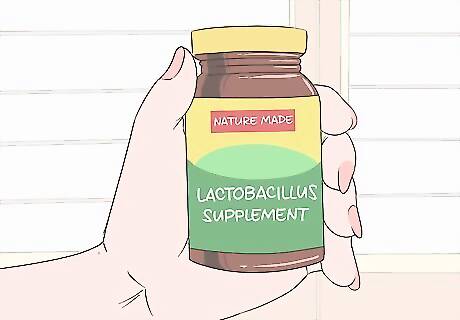
Choose a high-quality lactobacillus supplement. Go to a local supplement or health food store and select a strain of lactobacillus based on what you're taking the supplement for. For example, you might find a strain or mixture designed to manage diarrhea or relieve the symptoms of irritable bowel syndrome.Did You Know? Although supplements aren't regulated by the Food and Drug Administration, supplements should list how many Colony Forming Units (CFU) are in each supplement. The supplements should also be refrigerated so the lactobacilli, which are sensitive to heat, aren't destroyed. If you're feeling overwhelmed when looking for a supplement, ask your doctor to recommend a specific strain of lactobacillus for you to take.

Follow the manufacturer's dosing instructions. Since lactobacillus supplements contain different amounts of bacteria, read the instructions on the package. Depending on the number of organisms in the supplement, you might be directed to take 1 or 2 tablets once or twice a day. Supplements with a higher number of organisms might only need to be taken once a day. The manufacturer may recommend that you take the supplement with food in order to increase absorption.
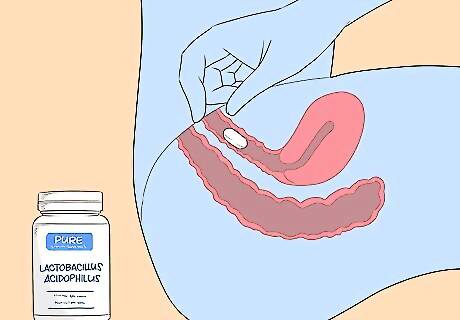
Insert 1 lactobacillus suppository twice a day if you're treating a vaginal infection. Buy a vaginal suppository that has 100 million to 1 billion colony-forming units of lactobacillus and insert it into your vagina 2 times a day. Use the suppositories for 6 days before you see results.
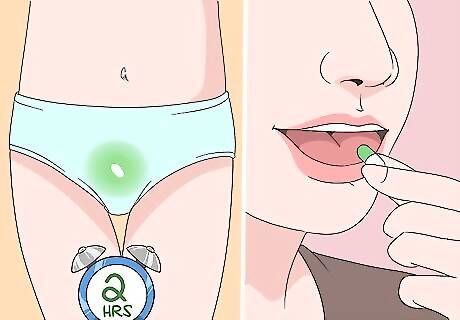
Wait 2 hours to take a lactobacillus supplement if you're also on antibiotics. If you're already taking antibiotics to treat an infection, keep in mind that these antibiotics can reduce the lactobacilli you're getting from a supplement. To make the lactobacillus supplement more effective, wait at least 2 hours after taking antibiotics to take the lactobacillus supplement. If you prefer, take the lactobacillus supplement at least 2 hours before taking the antibiotics.

Expect mild gas or bloating after you start taking the supplement. If you experience these side effects, keep in mind that they usually go away within several days of using the supplement. However, get immediate medical attention if you experience any of these side effects: Rapid heartbeat Dizziness Hives, rash, or itchy skin Tightness in your chest Coughing or difficulty breathing Weakness or tiredness















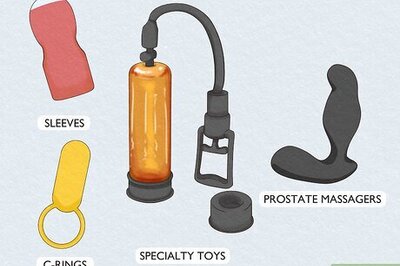


Comments
0 comment